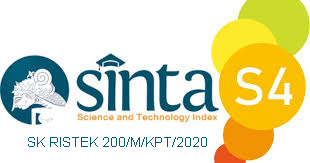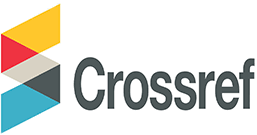Empowering Diagnosis: A Review On Deep Learning Applications for COVID-19 and Pneumonia in X-Ray Images
Abstract
The emergence of COVID-19, a highly contagious virus capable of infecting both the upper and lower respiratory tracts, has led to one of the deadliest pandemics in modern history, claiming millions of lives worldwide. Early and accurate detection of this rapidly spreading disease is crucial for effective containment and saving lives. Chest X-ray (CXR) stands out as a promising diagnostic tool due to its accessibility, affordability, and long-term sample preservation. However, distinguishing COVID-19 pneumonia from other respiratory ailments poses a significant challenge. This article delves into various approaches utilized for COVID-19 detection and the hurdles encountered in this endeavor. The imperative for developing automated detection systems to mitigate virus transmission via contact is underscored. Notably, deep learning architectures such as ResNet, Inception and Googlenet have been deployed for COVID-19 detection, albeit with a focus on identifying pneumonia cases. Discriminating between COVID-19-induced pneumonia and pneumonia caused by other pathogens remains a formidable task, demanding innovative solutions for accurate and timely diagnosis.
Keywords
Full Text:
PDFReferences
Ali, S. M., Alsaeedi, A. H., Al-Shammary, D., Alsaeedi, H. H., & Abid, H. W. (2021). Efficient intelligent system for diagnosis pneumonia (SARSCOVID19) in X-ray images empowered with initial clustering. Indones. J. Electr. Eng. Comput. Sci, 22(1), 241-251.
Ali, S. M., Alsaeedi, A. H., Al-Shammary, D., Alsaeedi, H. H., & Abid, H. W. (2021). Efficient intelligent system for diagnosis pneumonia (SARSCOVID19) in X-ray images empowered with initial clustering. Indones. J. Electr. Eng. Comput. Sci, 22(1), 241-251.
Meedeniya, D., Kumarasinghe, H., Kolonne, S., Fernando, C., De la Torre Díez, I., & Marques, G. (2022). Chest X-ray analysis empowered with deep learning: A systematic review. Applied Soft Computing, 126, 109319.
Singh, V. K., & Kolekar, M. H. (2022). Deep learning empowered COVID-19 diagnosis using chest CT scan images for collaborative edge-cloud computing platform. Multimedia Tools and Applications, 81(1), 3-30.
Ahmed, M. S., Rahman, A., AlGhamdi, F., AlDakheel, S., Hakami, H., AlJumah, A., ... & Basheer Ahmed, M. I. (2023). Joint diagnosis of pneumonia, COVID-19, and tuberculosis from chest X-ray images: a deep learning approach. Diagnostics, 13(15), 2562.
Hemalatha, M. (2022). A hybrid random forest deep learning classifier empowered edge cloud architecture for COVID-19 and pneumonia detection. Expert Systems with Applications, 210, 118227.
Hemalatha, M. (2022). A hybrid random forest deep learning classifier empowered edge cloud architecture for COVID-19 and pneumonia detection. Expert Systems with Applications, 210, 118227.
Hou, Y., Li, Q., Zhang, C., Lu, G., Ye, Z., Chen, Y., ... & Cao, D. (2021). The state-of-the-art review on applications of intrusive sensing, image processing techniques, and machine learning methods in pavement monitoring and analysis. Engineering, 7(6), 845-856.
Chen, C., Chandra, S., Han, Y., & Seo, H. (2021). Deep learning-based thermal image analysis for pavement defect detection and classification considering complex pavement conditions. Remote Sensing, 14(1), 106.
Shyni, H. M., & Chitra, E. (2022). A comparative study of X-ray and CT images in COVID-19 detection using image processing and deep learning techniques. Computer Methods and Programs in Biomedicine Update, 2, 100054.
Chowdhur, A. J. (2022). An Improved Novel Corona virus (COVID-19) Detection Model Employing Convolutional Neural Networks Based on Lung X-Ray Imag (Doctoral dissertation, Department of Electronic and Telecommunication Engineering).
Hegazi, E. H., Yang, L., & Huang, J. (2021). A convolutional neural network algorithm for soil moisture prediction from Sentinel-1 SAR images. Remote Sensing, 13(24), 4964.
Salih, S. Q., Abdulla, H. K., Ahmed, Z. S., Surameery, N. M. S., & Rashid, R. D. (2020). Modified alexnet convolution neural network for covid-19 detection using chest x-ray images. Kurdistan Journal of Applied Research, 119-130.
Singh, K. K., Siddhartha, M., & Singh, A. (2020). Diagnosis of coronavirus disease (COVID-19) from chest X-ray images using modified XceptionNet. Romanian Journal of Information Science and Technology, 23(657), 91-115.
Arifin, F., Artanto, H., & Nurhasanah, T. S. G. (2021). Fast COVID-19 detection of chest X-ray images using single shot detection MobileNet convolutional neural networks. Journal of Southwest Jiaotong University, 56(2).
Loey, M., Smarandache, F., & M. Khalifa, N. E. (2020). Within the lack of chest COVID-19 X-ray dataset: a novel detection model based on GAN and deep transfer learning. Symmetry, 12(4), 651.
Abraham, B., & Nair, M. S. (2020). Computer-aided detection of COVID-19 from X-ray images using multi-CNN and Bayesnet classifier. Biocybernetics and biomedical engineering, 40(4), 1436-1445.
Hussain, L., Nguyen, T., Li, H., Abbasi, A. A., Lone, K. J., Zhao, Z., ... & Duong, T. Q. (2020). Machine-learning classification of texture features of portable chest X-ray accurately classifies COVID-19 lung infection. BioMedical Engineering OnLine, 19, 1-18.
Sheykhivand, S., Mousavi, Z., Mojtahedi, S., Rezaii, T. Y., Farzamnia, A., Meshgini, S., & Saad, I. (2021). Developing an efficient deep neural network for automatic detection of COVID-19 using chest X-ray images. Alexandria Engineering Journal, 60(3), 2885-2903.
Adedigba, A. P., Adeshina, S. A., Aina, O. E., & Aibinu, A. M. (2021). Optimal hyperparameter selection of deep learning models for COVID-19 chest X-ray classification. Intelligence-based medicine, 5, 100034.
Pandit, M. K., Banday, S. A., Naaz, R., & Chishti, M. A. (2021). Automatic detection of COVID-19 from chest radiographs using deep learning. Radiography, 27(2), 483-489.
Annavarapu, C. S. R. (2021). Deep learning-based improved snapshot ensemble technique for COVID-19 chest X-ray classification. Applied Intelligence, 51(5), 3104-3120.
Barshooi, A. H., & Amirkhani, A. (2022). A novel data augmentation based on Gabor filter and convolutional deep learning for improving the classification of COVID-19 chest X-Ray images. Biomedical Signal Processing and Control, 72, 103326.
Syarif, A., Azman, N., Repi, V. V. R., Sinaga, E., & Asvial, M. (2022). UNAS-Net: A deep convolutional neural network for predicting Covid-19 severity. Informatics in Medicine Unlocked, 28, 100842.
Nasiri, H., & Hasani, S. (2022). Automated detection of COVID-19 cases from chest X-ray images using deep neural network and XGBoost. Radiography, 28(3), 732-738.
Sharma, A., Singh, K., & Koundal, D. (2022). A novel fusion based convolutional neural network approach for classification of COVID-19 from chest X-ray images. Biomedical Signal Processing and Control, 77, 103778.
Sharma, P., Arya, R., Verma, R., & Verma, B. (2023). Conv-CapsNet: capsule based network for COVID-19 detection through X-Ray scans. Multimedia Tools and Applications, 82(18), 28521-28545.
Attallah, O. (2023). RADIC: A tool for diagnosing COVID-19 from chest CT and X-ray scans using deep learning and quad-radiomics. Chemometrics and Intelligent Laboratory Systems, 233, 104750.
Talukder, M. A., Layek, M. A., Kazi, M., Uddin, M. A., & Aryal, S. (2024). Empowering covid-19 detection: Optimizing performance through fine-tuned efficientnet deep learning architecture. Computers in Biology and Medicine, 168, 107789.
Mohan, G., Subashini, M. M., Balan, S., & Singh, S. (2024). A multiclass deep learning algorithm for healthy lung, Covid-19 and pneumonia disease detection from chest X-ray images. Discover Artificial Intelligence, 4(1), 20.
Bennour, A., Aoun, N. B., Khalaf, O. I., Ghabban, F., Wong, W. K., & Algburi, S. (2024). Contribution to pulmonary diseases diagnostic from X-ray images using innovative deep learning models. Heliyon.
Shimja, M., & Kartheeban, K. (2024). Empowering diagnosis: an astonishing deep transfer learning approach with fine tuning for precise lung disease classification from CXR images. Automatika, 65(1), 192-205.
Baig, M. D., Haq, H. B. U., Irshad, M. N., & Akram, W. (2024). Pneumonia detection technique empowered with transfer learning approach. Healthcraft Front, 2(1), 20-33.
Bal Naypyane. (2021). https://www.kaggle.com/balnyaupane/pneumonia-chest-xray-dataset-200-by-200-image
Muhammad, M., Zeebaree, D., Brifcani, A. M. A., Saeed, J., & Zebari, D. A. (2020). Region of interest segmentation based on clustering techniques for breast cancer ultrasound images: A review. Journal of Applied Science and Technology Trends, 1(2), 78-91.
Amanoul, S. V., Abdulazeez, A. M., Zeebare, D. Q., & Ahmed, F. Y. (2021, June). Intrusion detection systems based on machine learning algorithms. In 2021 IEEE international conference on automatic control & intelligent systems (I2CACIS) (pp. 282-287). IEEE.
Saeed, J., & Abdulazeez, A. M. (2021). Facial beauty prediction and analysis based on deep convolutional neural network: a review. Journal of Soft Computing and Data Mining, 2(1), 1-12.
DOI: https://doi.org/10.31326/jisa.v7i1.2024
Refbacks
- There are currently no refbacks.
Copyright (c) 2024 Karin Younis Yaqoub, Adnan Mohsin Abdulazeez

This work is licensed under a Creative Commons Attribution-ShareAlike 4.0 International License.
JOURNAL IDENTITY
Journal Name: JISA (Jurnal Informatika dan Sains)
e-ISSN: 2614-8404, p-ISSN: 2776-3234
Publisher: Program Studi Teknik Informatika Universitas Trilogi
Publication Schedule: June and December
Language: English
APC: The Journal Charges Fees for Publishing
Indexing: EBSCO , DOAJ, Google Scholar, Arsip Relawan Jurnal Indonesia, Directory of Research Journals Indexing, Index Copernicus International, PKP Index, Science and Technology Index (SINTA, S4) , Garuda Index
OAI address: http://trilogi.ac.id/journal/ks/index.php/JISA/oai
Contact: jisa@trilogi.ac.id
Sponsored by: DOI – Digital Object Identifier Crossref, Universitas Trilogi
In Collaboration With: Indonesian Artificial Intelligent Ecosystem(IAIE), Relawan Jurnal Indonesia, Jurnal Teknologi dan Sistem Komputer (JTSiskom)
JISA (Jurnal Informatika dan Sains) is Published by Program Studi Teknik Informatika, Universitas Trilogi under Creative Commons Attribution-ShareAlike 4.0 International License.


















